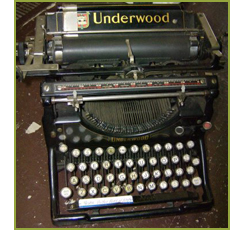
Use multi-function newsletters to educate, promote and sell!
Your business is newsworthy and there are people within your target market who want to read what you have to say! More importantly, you want people to read what you have to say and the one vehicle that adds credibility to your marketing mission is the corporate newsletter. Monthly, quarterly or annually you can, with some creativity and planning, publish content that is valuable for you and your audience.
 Company newsletters are an excellent way to keep in touch with current customers and to keep your company’s name, products and/or services on their minds. A good company newsletter can also be a useful marketing vehicle to attract new business while enhancing image and supporting relationships.
Company newsletters are an excellent way to keep in touch with current customers and to keep your company’s name, products and/or services on their minds. A good company newsletter can also be a useful marketing vehicle to attract new business while enhancing image and supporting relationships.
You might think that your enterprise isn’t newsworthy, but you’d be mistaken. The news that you create may not generate a flood of interest but effective newsletters are possible for companies of all sizes when they develop consistently excellent newsletter content.
Plan your newsletter to be quickly read, packed full of valuable information offering your customers ideas to help improve their businesses and their lives. The length or size of your newsletter may be dictated by the size and activity of your company but even small companies have information that can be turned into news. Newsletters can be as simple or as elaborate as you like, but if you are just beginning, it is wise to keep them simple and to focus on developing valuable content.
Here are ten tips to help you develop an effective newsletter for your company:
1. STRATEGIZE: Your corporate newsletter should have a mission, a goal and be directed toward your target audience. Keeping these objectives in focus will help you develop meaningful content.
2. PLAN: A realistic schedule for publishing your newsletter will help you prepare to make it as effective as it can be. By determining how much content your company generates you should be able to decide if the newsletter will work best as an annual, semi-annual, quarterly, bi -monthly or monthly publication. You will be surprised at how many recipients come to expect your newsletter each issue.
3. CONTENT: There are several ways to develop content; produce it on your own by identifying and authoring stories, purchasing royalty-free articles from a source in your industry or hiring an effective advertising agency to work with you to create effective content. Each of these alternatives has its benefits and drawbacks but you will need to select an initial content-development path.
4. PUBLISH: If you can effectively layout the newsletter in-house – in a style that will allow your readers to be wowed – it’s easier, faster and less expensive than hiring pros but, like anything else I have ever written about in this column, be certain you’re not saving a few dollars at the expense of your corporate image.
5. REPORTING: There are a variety of ways to obtain valuable newsletter information and sources where interesting material can be located. You can solicit customers, vendors, consultants and employees for ideas or assign them stories. Interview key team members, provide seasonal advice and search through trade, professional, business and government publications for story ideas that you can develop.
6. INCLUSIONS: As general topics for regular sections or columns in your newsletter, consider including case studies about your customers using your products or services, trends in the industry, new products or service highlights and information on why and how to contact your company. The ultimate goal of any piece of marketing is to generate a sale, so be sure to include some interactive elements such as a quiz, a give-away or a free consultation announcement.
7. INTERACTIVITY: Make sure that your newsletter is more than a one-way communication tool by stimulating reader feedback to help make it more valuable to them and for your company. Cover topics that require people to call you for more details or offer free estimates with a coupon in the newsletter. Make feedback and communication easy by prominently publishing your phone number, including a faxable form or plenty of html links in the electronic version.
8. FORMATING: There’s no denying that hard copy versions of newsletters are still widely read because studies show, when people are in front of their computers they prefer to be accomplishing work. A client of ours, Arbill Safety Products, discontinued their elegant eight-page, full-color newsletter in favor of an online version and readership levels dropped although active responses back to their site increased. Our advice; publish both varieties to get more bang for your buck.
9. VOICE: Unless your content is valuable and layout professional your newsletter will not get read. Even then, your writing style or voice, had better be personal and friendly rather than terse or preachy. Try to keep your stories brief and include representative art whenever possible.
10) UTILITARIAN: The more useful and applicable to the audience each section and story within the newsletter is, the more successful it will be. Consider Budget Maintenance, Inc. who publishes a quarterly customer newsletter (Budget Response) detailing services, achievements and new capabilities as well as a bi-monthly employee newsletter (Budget Bulletin) where work and safety tips are supplemented with birthdays, anniversaries and employee spotlights and features. Both newsletters are audience specific and, by design, useful tools for the readers. And, because they deliver hard copy and online versions the vehicles are well received and well read.
—————————————–
©2006
Todd Palmer and Virtual Farm Creative, Inc.
ALL RIGHTS RESERVED.
—————————————–.

